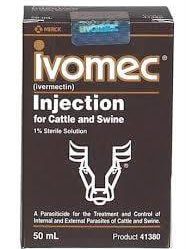
JOIN US
GET OUR KUNEKUNE
NEWSLETTER
New and highly discounted products, fresh and hot stories & useful information
KuneKune Pig Health - Lice and Mites

KuneKune Pig Health - Identify Lice and Mites
While KuneKunes are very hardy and healthy pigs, things will come up during your time raising them. So, knowing about KuneKune Pig Health issues is important. This one is an extremely easy thing to treat to maintain KuneKune Health
Worried about lice and mites in your pig herd? Our guide will help you identify and treat these common pests, so you can keep your pigs thriving. Lice and mites are common pests that can affect pigs, causing discomfort and potentially leading to health issues. It's important to be able to identify these parasites and take steps to treat and prevent infestations. In this guide, we'll provide information on how to spot lice and mites in your pig herd and offer tips for effective treatment.
Understanding the signs and symptoms of lice and mites in pigs.
Lice and mites can cause a range of symptoms in pigs, including itching, hair loss, and skin irritation. You may also notice scabs or crusts on the skin, particularly around the ears, neck, and tail. In severe cases, lice and mite infestations can lead to anemia and weight loss. Regular monitoring of your pig herd and prompt treatment can help prevent these issues from occurring.
When you see excessive rubbing to relieve the systems you should further examine for lice. For lice you will notice small white spots that look like lint or even eggs around the hair shafts. This should be treated immediately as lice need blood to live, they are making a meal out of your beloved KuneKunes.
Implementing preventative measures to avoid infestations.
The best way to avoid lice and mite infestations in your pig herd is to implement preventative measures. This includes regularly cleaning and disinfecting your pig housing and equipment, as well as providing your pigs with a clean and dry environment. You should also regularly inspect your pigs for signs of infestation and isolate any affected animals to prevent the spread of the pests. Additionally, consider using insecticides or other treatments as a preventative measure, particularly during peak infestation seasons. By taking these steps, you can help keep your pig herd healthy and thriving.
Treating lice and mites with topical and systemic medications.
When it comes to treating lice and mites in your pig herd, there are a variety of topical and systemic medications available. Topical treatments are applied directly to the skin and include products like sprays, powders, and shampoos. Systemic treatments, on the other hand, are administered orally or through injection and work by targeting the pests from within the pig's body. It's important to consult with a veterinarian to determine the best treatment plan for your specific situation and to ensure that you are using the medications safely and effectively.
For mites you will do three treatments 10 days apart. For Lice: you will need to do 2 doses 10-14 days apart to break the cycle.
Thoroughly cleaning and disinfecting pig housing and equipment.
In addition to treating individual pigs for lice and mites, it's important to also focus on preventing the spread of these pests throughout your herd. Thoroughly cleaning and disinfecting pig housing and equipment is crucial in this effort. Use a high-pressure washer to remove any debris or organic matter from surfaces, then apply a disinfectant solution to kill any remaining pests or eggs. Be sure to follow the manufacturer's instructions for dilution and application and allow sufficient time for the disinfectant to work before reintroducing pigs to the area. Regular cleaning and disinfecting can help keep your pig herd healthy and thriving.
Monitoring and maintaining pig health to prevent future infestations.
While treating lice and mites in your pig herd is important, it's equally important to focus on preventing future infestations. Regularly monitoring your pigs for signs of pests, such as scratching or hair loss, can help you catch infestations early and prevent them from spreading. Additionally, maintaining good hygiene practices, such as regularly cleaning and disinfecting pig housing and equipment, can help prevent the spread of pests throughout your herd. By taking a proactive approach to pig health, you can help ensure the long-term health and well-being of your herd.
Frequently Ask Questions
How do you treat lice?
A symptom of lice is when you see your pig excessively rubbing themselves to relieve the itching that lice can cause. You can sometimes see lice on a pig around its ears, head, and flank areas as well. It would look like white lint or small white eggs on their hair.
What to use for Lice treatment?
This is one of the easier things to treat in pigs. Use either ivermectin, diazinon, lindane or deltamethrin 1%. Deltamethrin (Coopers spot-on) has long lasting effects and is used as a pour on. Two doses given ten days apart will totally eradicate lice. All medicines are ineffective against the eggs hence the necessity to treat twice.
For mites you will do three treatments 10 days apart.
What are Mites?
Pigs can get sarcoptic manage which is caused by a mite that lives in the pigs' skin. It can easily be spread from pig to pig within your herd by direct contact or even with surfaces or bedding they have all encounters. Therefore, it is ideal to quarantine a KuneKune that is suspected of having mites. The life cycle is 10-15 days in the environment. Therefore, it is necessary to treat all areas that the pig or pigs have been in, and all surfaces they may have shared with other pigs. These mites cannot be seen visually without the aid of a microscope. However, it is easy to treat.
How to treat mites?
You will again use ivermectin to treat mange mites the same as lice. Ivermectin is widely used for many purposes including lungworms, roundworms, and threadworms. While easy to treat, you will need to do 2 doses 10-14 days apart to break the cycle.
In conclusion, while KuneKune Pigs' health is extremely important, you will encounter many things that will pop up from time to time. Knowing how to handle these concerns regarding their health is important as well. Lice and Mites are easily treated and even more simple to prevent.
Registry Office
17500 Hamilton Arms Court Dewitt, VA 23840